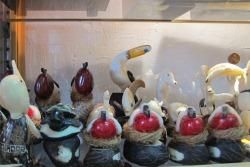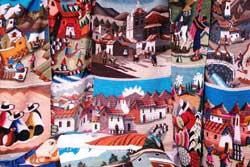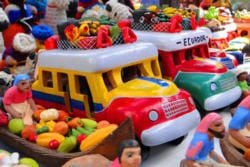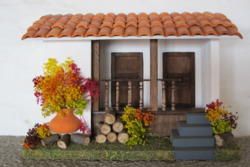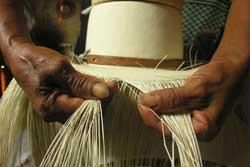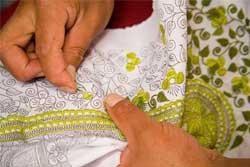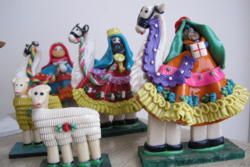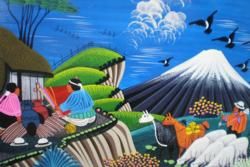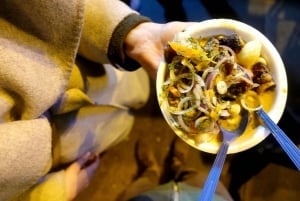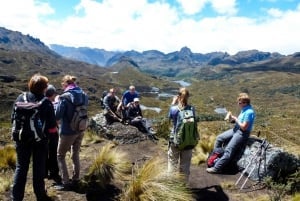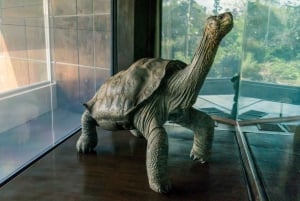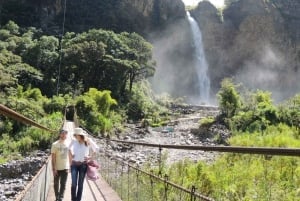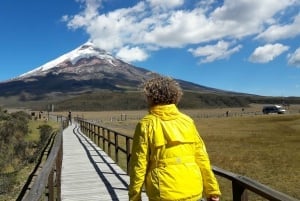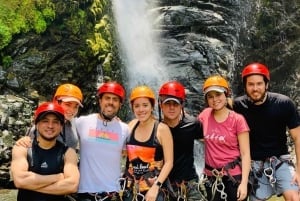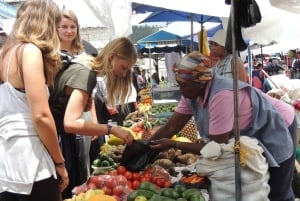Handicrafts
Ecuador has a very assorted list of handicrafts. The most well-known market in the country is the Plaza de los Ponchos (Ponchos Square) in Otavalo, 95 km north of Quito, which attracts tourists every day of the year. The main cities all have quite large and assorted handicrafts markets (see map below for locations) and some stores too; in small towns and villages, and at hotels and lodges, you can usually also find the local handicrafts. The most typical and popular ones are:
"Masapan" figurines, original from the town of Calderón, north of Quito, are very colorful and detailed figurines made of a flour and water dough that dries and hardens, representing indigenous people, animals, plants, and all kinds of different subjects. They can be found in every handicraft stand or shop, at very convenient prices. Very popular at Christmas time are the nativity scenes and tree decorations, which are even exported to Europe and other countries.
Panama (Paja Toquilla) Hat: this worldwide famous hat is actually made in Ecuador, in the town of Montecristi, Manabí province. The top quality ones are so finely woven that they can be folded into small boxes without losing their shape.
Otavalo textiles, tapestries, and knit accessories: in the Otavalo area, there are many weaving and knitting workshops where blankets, ponchos, sweaters, tapestries, pillow covers, bags, and many more items have been made for centuries from sheep and alpaca wool, with techniques and designs passed from one generation to another.
Embroidery: this has been an ancestral custom in Ecuador, as most of the traditional garb of the highlands' indigenous people is embroidered. Very well-known are the items from the community of Zuleta, Imbabura province, where a former President of the country, Galo Plaza Lasso, and his wife started a program for the indigenous women of the community to make hand-embroidered fine linen and wear. Its flower and country scenery designs are very colorful and lively. The items can be found in most of the handicrafts markets, but the best quality ones can be purchased in the fine handicraft shops.
"Tagua" figurines and jewelry: Tagua is a white seed found in the subtropical andean region and on the coasts of Manabí and Esmeraldas. It is also known as the vegetable ivory because, when carved and polished, it looks very much like ivory. It takes natural dyes very well, producing lively colored pieces. It has been used as raw material for buttons since the 1800's and only recently has served other purposes, like handicraft creation.
Tigua Paintings: Most of the inhabitants of the small indigenous community of Tigua in the Cotopaxi province spend their time painting. Their canvases can be sheep skin or wood accessories like boxes, trays, masks, and others. They have inherited from their ancestors their unique naif style of expressing their life in the Andes.
Miniature House Facades: These are made in wood and modeled after the traditional hacienda houses, with all the details, like wood logs, flowers, and curtains, and can be hung on the walls.
Miniature "Chivas": Inspired on the open buses of the coast, known popularly as "chivas", these miniature ceramic figurines have all the details of real life.
Some places have their speciality: Cotacachi for inexpensive good quality leather goods, San Antonio de Ibarra for wooden figures, and Pelileo for jeans (yes, a whole town dedicated to make jeans!).


